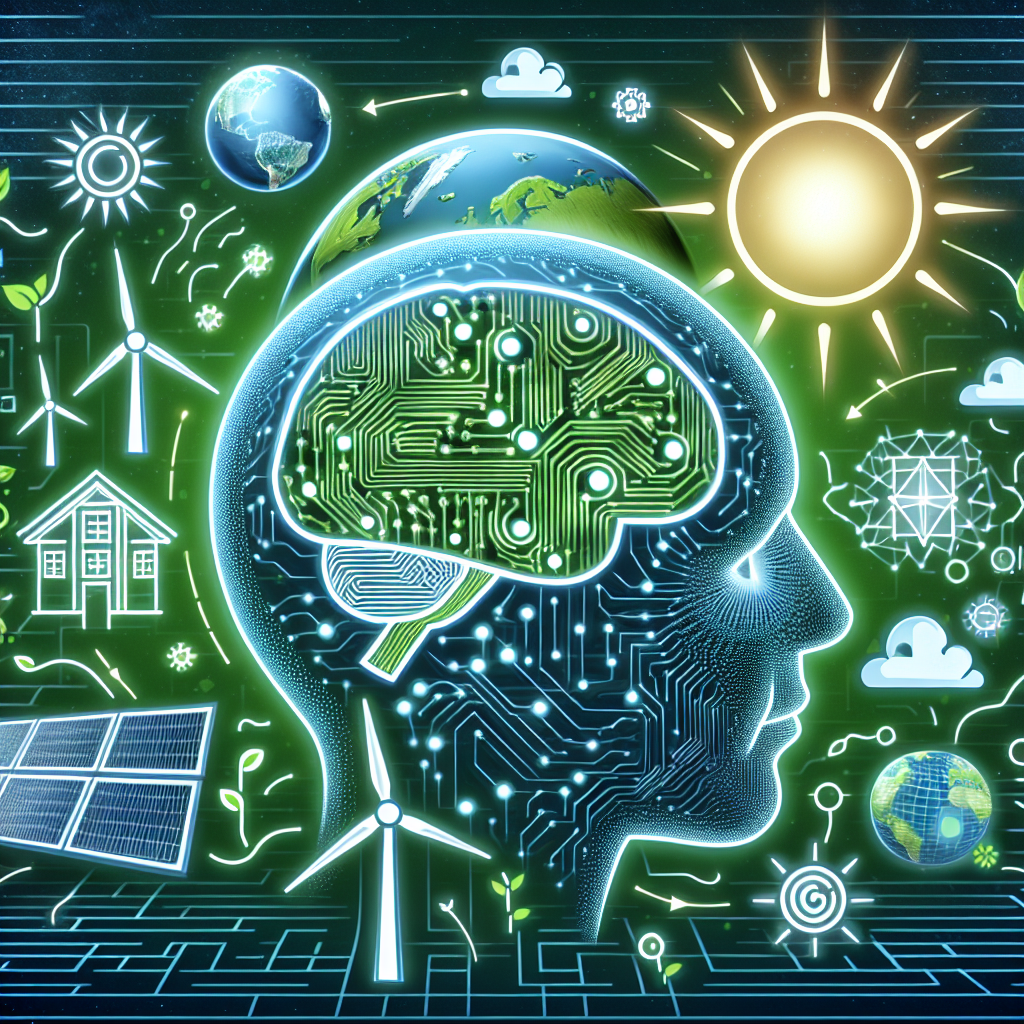Artificial intelligence (AI) has been revolutionizing various industries, including the energy sector. In recent years, AI applications have been increasingly used to develop sustainable renewable energy solutions. These solutions have the potential to address the challenges of climate change, reduce carbon emissions, and create a more sustainable energy future. In this article, we will explore the various AI applications for sustainable renewable energy solutions and their benefits.
AI Applications for Sustainable Renewable Energy Solutions
1. Energy Forecasting: AI algorithms can analyze historical data, weather patterns, and other relevant factors to predict energy demand and supply. This helps energy providers optimize their operations, reduce costs, and minimize waste. By accurately forecasting energy needs, renewable energy sources like solar and wind can be integrated more efficiently into the grid.
2. Smart Grids: AI can be used to develop smart grids that can predict and respond to changes in energy demand in real-time. By analyzing data from sensors and meters, AI algorithms can optimize energy distribution, reduce transmission losses, and improve grid reliability. Smart grids also enable better integration of renewable energy sources and storage technologies.
3. Energy Management Systems: AI-powered energy management systems can optimize energy consumption in buildings, factories, and other facilities. These systems can analyze energy usage patterns, adjust settings based on occupancy and weather conditions, and automate energy-saving measures. By reducing energy waste, businesses can lower their carbon footprint and save on energy costs.
4. Renewable Energy Siting: AI can help identify optimal locations for renewable energy projects, such as solar farms and wind turbines. By analyzing geospatial data, weather patterns, and environmental factors, AI algorithms can determine the most suitable sites for generating clean energy. This not only maximizes energy production but also minimizes the impact on ecosystems and communities.
5. Predictive Maintenance: AI can enable predictive maintenance of renewable energy infrastructure, such as solar panels and wind turbines. By analyzing sensor data and performance metrics, AI algorithms can predict equipment failures before they occur, allowing for timely repairs and preventing costly downtime. This helps maximize the lifespan of renewable energy assets and ensures their efficient operation.
Benefits of AI Applications for Sustainable Renewable Energy Solutions
1. Increased Efficiency: AI algorithms can optimize energy production, distribution, and consumption, leading to increased efficiency in the energy sector. By reducing waste and improving system performance, AI applications help maximize the use of renewable energy sources and minimize reliance on fossil fuels.
2. Cost Savings: AI-powered solutions can lower energy costs for businesses and consumers by optimizing energy usage, reducing maintenance expenses, and improving grid reliability. By leveraging AI technologies, companies can achieve significant savings in their energy bills and operational costs.
3. Environmental Impact: Sustainable renewable energy solutions powered by AI can help reduce carbon emissions, mitigate climate change, and protect the environment. By promoting the use of clean energy sources, AI applications contribute to a more sustainable and eco-friendly energy system.
4. Grid Resilience: AI-enabled smart grids enhance the resilience of energy infrastructure against disruptions, such as natural disasters or cyberattacks. By enabling real-time monitoring and response capabilities, smart grids can better manage energy flows, prevent outages, and ensure grid stability.
5. Innovation and Growth: AI applications drive innovation in the renewable energy sector, leading to the development of new technologies and business models. By fostering collaboration between AI experts and energy professionals, innovative solutions can be created to address the evolving challenges of the energy transition.
FAQs
Q: How can AI help integrate renewable energy sources into the grid?
A: AI algorithms can optimize the integration of renewable energy sources by forecasting energy supply and demand, managing energy storage, and balancing grid operations in real-time. By analyzing data from sensors and meters, AI can ensure the efficient and reliable integration of solar, wind, and other clean energy sources into the grid.
Q: What are the challenges of using AI for sustainable renewable energy solutions?
A: Some challenges of using AI for sustainable renewable energy solutions include data quality and availability, regulatory barriers, and the need for skilled AI professionals. Overcoming these challenges requires collaboration between energy stakeholders, policymakers, and technology providers to develop robust AI applications that support the energy transition.
Q: How can businesses benefit from AI-powered energy management systems?
A: Businesses can benefit from AI-powered energy management systems by optimizing their energy consumption, reducing costs, and lowering their carbon footprint. By analyzing energy usage patterns and automating energy-saving measures, businesses can achieve significant savings in their energy bills and contribute to a more sustainable energy future.
In conclusion, AI applications play a crucial role in developing sustainable renewable energy solutions that address the challenges of climate change and promote a more sustainable energy future. By leveraging AI algorithms for energy forecasting, smart grids, energy management, renewable energy siting, and predictive maintenance, businesses and energy providers can optimize their operations, reduce costs, and lower their environmental impact. With the benefits of increased efficiency, cost savings, environmental impact, grid resilience, and innovation, AI-powered solutions are poised to transform the energy sector and accelerate the transition to clean and renewable energy sources.

